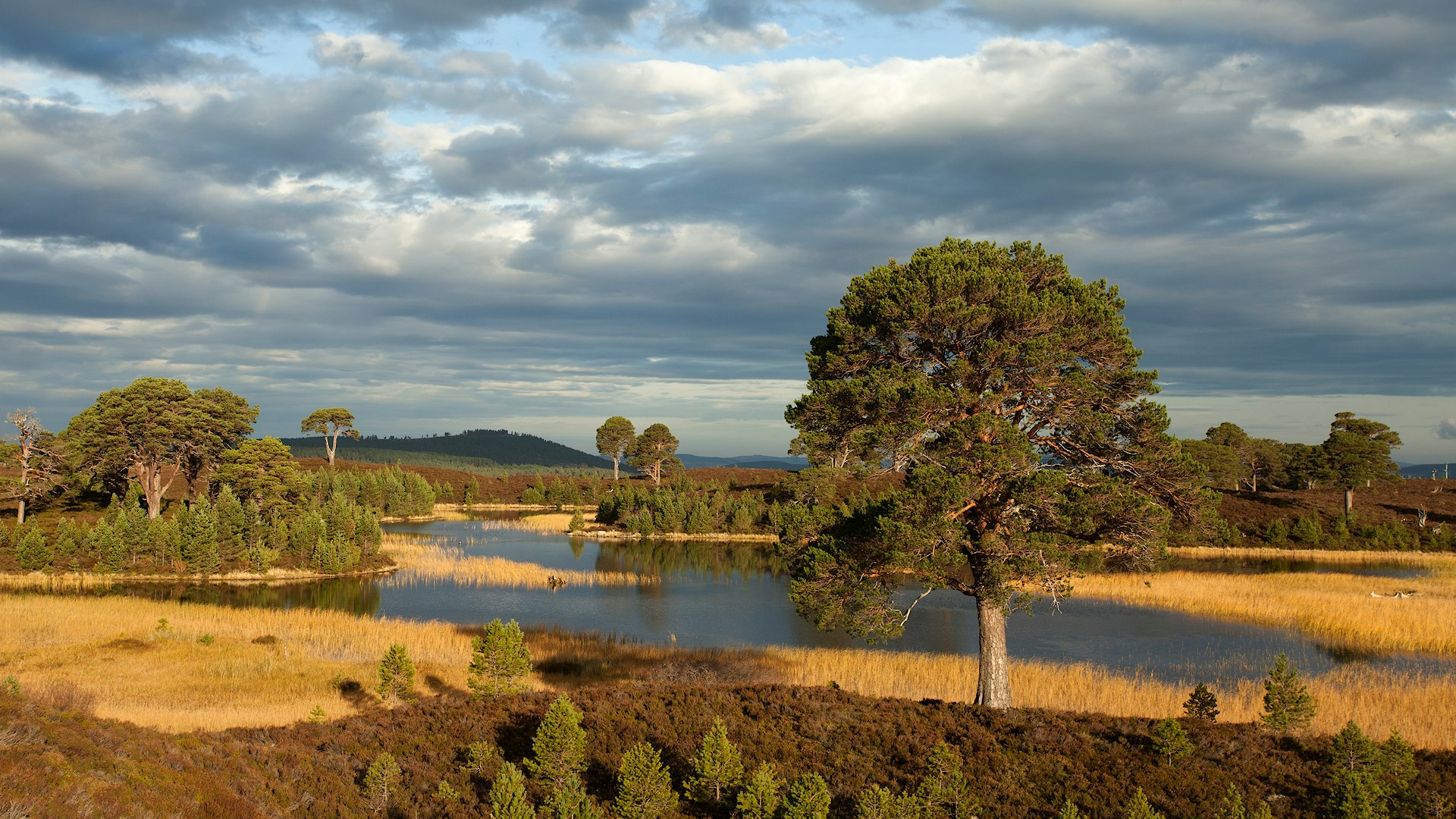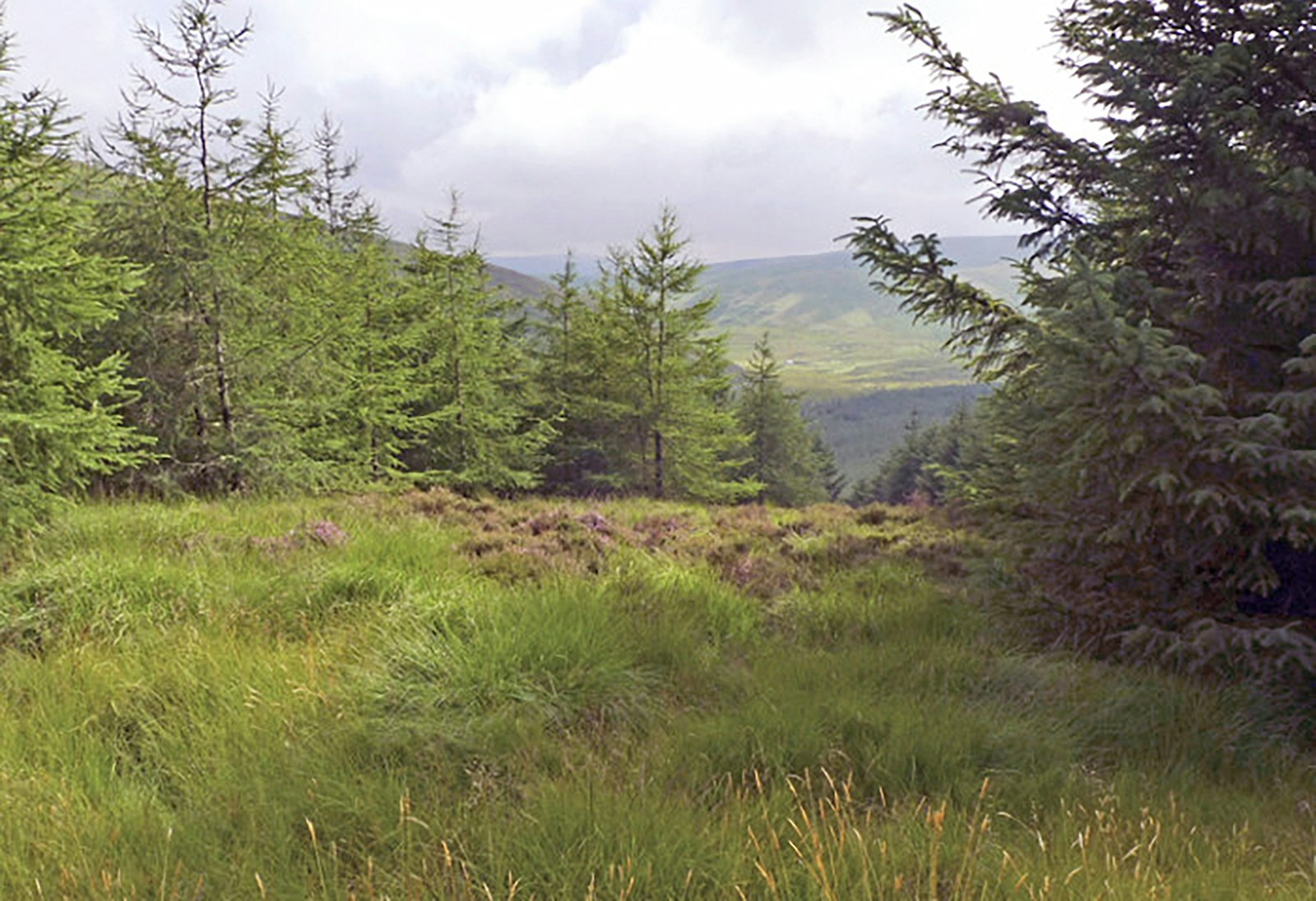Trees, woodland and rewilding
Expanding our natural woodlands, and connecting them up, is crucial to both restoring biodiversity and helping wildlife thrive in Britain.

Rewilding is not just about bringing trees back, but it’s a hugely important element. Woodland cover across Britain presently stands at a mere 13%. Much of this comprises exotic conifer and broadleaf plantations. These are crucial for timber production but support less wildlife and often absorb less carbon than natural woodlands and forests. When you consider the European average woodland cover is 37%, it’s easy to see we’re short of trees.
Trees should be abundant in the British landscape, interspersed with meadows, wetlands, bog and other habitat. A mosaic landscape capable of absorbing great quantities of carbon and supporting a rich assortment of wildlife, including grazing animals and people. Instead, remnants of our rich rainforests and oak woods lie scattered. Although they can be beautiful, they’re often much diminished. Many are struggling to survive, with few younger trees regenerating or growing past the sapling stage.
Trees give us fresh air, food, and shelter. Dead and alive, they’re a home and food source for an unimaginable range of plants, animals and insects. They help protect against flooding, enrich soils and improve river health. They give us medicine, oils, syrups, and even wine. Trees are among our greatest allies, working with each other, and alongside fungi, plants, insects, birds and animals, to form part of the life force that keeps us alive.
13%
of Britain is woodland compared to 40% of the EU area
“Trees give us fresh air, food, and shelter. Dead and alive, they’re a home and food source for an unimaginable range of plants, animals and insects”
Natural forests and woodlands give us the oxygen we need to breathe while removing carbon dioxide and pollutants from the air. They’re vital to adapting to and mitigating climate change. A report in the journal ‘Nature’ from 2016 states that:
‘From 1750 to 1850, roughly 190,000 square kilometres of Europe’s forest were cut down for fuel and to clear land for agriculture. Forests have since rebounded on an area more than twice that size, but fast-growing conifers have replaced deciduous trees across roughly 633,000 square kilometres. Although European forests continue to take up carbon, the shift in composition means that they now hold 3.1 billion tonnes less than they did in 1750.’
Protecting, expanding, regenerating
When we talk about expanding our woodlands in a rewilding context, we’re talking about the protection and natural regeneration of an intricate mosaic of our ancient woodlands, natural forests and wood pastures.
Given sufficient seed sources and suitable site conditions, trees will plant themselves in their millions for free over as large an area of land as we want to spare. Seeds dispersed by weather and animals will root where they can, often in unexpected places, creating mosaics of habitats — from open clearings and groves of trees to thicker canopy cover.
There are many positive reasons for planting trees, particularly in urban areas or where there’s no seed source, but in most places nature does it better. This is as true for rewilding woodlands as it is for wetlands, rivers and our seas. Letting nature lead is the best way to achieve diversity, resilience and wonder.
“Given sufficient seed sources and suitable site conditions, trees will plant themselves in their millions for free over as large an area of land as we are willing to spare”
Susan Wright, with thanks to Steve Jones
But nature is also unpredictable. The speed and type of woodland that will establish through natural regeneration depends on the interaction of multiple factors:
- Seed source including the frequency of seed production and forms of dispersal
- Soil and ground conditions including soil type as well as past and current land use
- Grazing pressure including the intensity and selectivity of grazing by wild and domestic herbivores
- Vegetation cover including density and composition and associated competition for light, nutrients and moisture
- Weather and micro-climate including warmth and moisture as events such as flooding
Sometimes we might need to give nature a helping hand — by reducing unnaturally high levels of grazing or clearing competing vegetation, for example. And if we want to embrace natural regeneration we have to embrace scrub.
Scrub is the thick, tangled, thorny vegetation, including blackberry and hawthorn, which usually appears first when grazing pressure is eased. It acts as a protector for seedlings against grazing and browsing animals. For years, in many places, scrub has been something to bash and clear to make the ground ‘tidy’ again. But scrub is an essential component of regenerating woodland.
A rewilding approach
We recommend a three-step approach where natural regeneration is the default, with tree planting as a support option where needed.
1. Let nature lead Allow natural regeneration as a default approach unless trees and shrubs are unable to establish or would take too long to arrive — for example, due to distant seed sources, impenetrable sward, overgrazing).
2. Give nature a hand Kick-start the process by assisting natural regeneration — for example, through ground preparation, direct seeding, grazing control and so on.
3. Plant trees Plant locally sourced tree saplings (‘whips’) only where it’s still necessary, particularly where this positively engages local people and communities.
Taking this approach to increasing woodland can start to introduce the structural complexity and diversity of habitats that’s been missing from Britain for too long. It supports genetic mixing and the natural selection of trees best adapted to local circumstances. It should also increase resilience to climate change and disease. And that offers hope for a future of flourishing nature.

We’re boosting rewilding on the ground
A woodland scoping study at Glenlude is one of 11 projects awarded in the latest round of the Rewilding Innovation Fund. The study will help shape a plan for native woodland restoration that complements low-impact forestry.
Uncover the full list of recipients awarded since 2021 to see the diverse range of rewilding projects taking action across Britain’s land and sea.

Explore our Rewilding Manifesto
Learn more
Our vision
We have big ambitions. Find out what we’ve set out to achieve through rewilding.
Our vision



